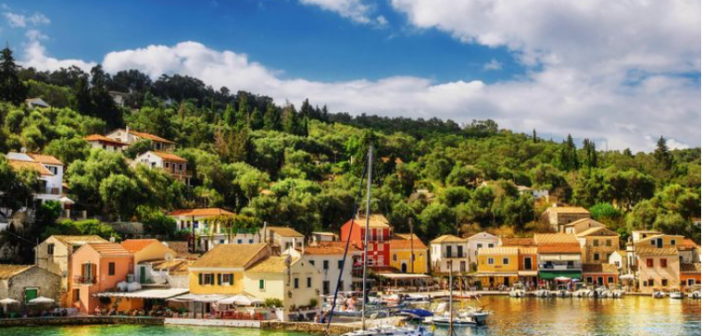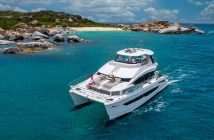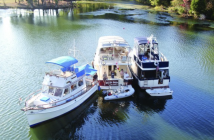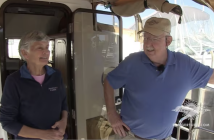Here’s a great story about the Ionian islands off the west coast of Greece, with some of the world’s most beautiful cruising destinations, from nationalgeographic.co.uk and the Greek National Tourism Organization:
Imagine sailing across a shimmering emerald sea, bottlenose dolphins cresting the waves alongside your boat. Ahead lies a mountainous island thick with oak, hornbeam, cypress pine and olive groves. Closer in, a pastel-shaded fishing village tumbles down the hillside, its harbour quay lined with traditional tavernas. A nearby sheltered cove, fringed with a pale gold beach, offers safe anchorage and a refreshing dip in limpid lapis lazuli waters. It’s just another idyllic day cruising around the Ionian islands.
Located off the west coast of mainland Greece, the Ionian islands are one of Europe’s top leisure sailing and yachting destinations. Navigation is easy — the region’s 100 or so islands and islets are mostly within sight of each other, the winds are light and the sunshine’s practically eternal. The main islands of Corfu, Paxi, Kefalonia and Ithaca have strong historic and cultural links with the Venetian empire, which ruled the region for 400 years, but more recent French and British occupiers have also left a lasting imprint. Here’s what not to miss when visiting each one.
Kefalonia
The largest of the Ionian islands, Kefalonia is home to beautiful Myrtos and Petani Beaches. Guiding crews across azure seas towards the island is 5,341-foot Mount Ainos, the Ionian Peninsula’s tallest peak — protected within a national park studded with rare black pines. The Port of Sami became globally famous when it appeared in the 2001 film Captain Corelli’s Mandolin, but it can’t compete with the Venetian architecture and cosmopolitan vibe of Fiskardo, the pick of harbours on the island’s east coast.
On Kefalonia’s western side, pray that the prevailing winds grant you access to the crescent-shaped cove that shelters the village of Assos, arguably the island’s most photogenic location. Also on this side of the island is the lively capital, Argostoli — some of its historic buildings were destroyed by an earthquake in 1953, but the town has been sensitively rebuilt and its quayside restaurants will draw you in for delicious seafood. Don’t leave the island without trying its Robola wines and fruity olive oils.
Don’t miss: Platia Ammos, near clifftop Kipouria Monastery, is a beautiful beach accessible only from the sea.
Corfu
The artist Edward Lear described Corfu’s seas as “peacock-wing-hued … tipped with lines of silver snow.” Discover the second-largest island in the Ionian Sea by sailing through its waters in search of Venetian fortresses, royal palaces and stunning beaches. Corfu is mountainous in the north, low-lying in the south, and its main yachting harbour is Gouvia Marina, on the east coast, four miles from the international airport. Sail south to the Old Town of Corfu, a UNESCO World Heritage Centre, and drop anchor at Mandraki Harbour beside the stone walls of the 15th-century Old Fortress, the manicured lawns of Spianáda square and the French-built Liston promenade. Then, hike up to the New Fort, where tunnels and passages lead up to ramparts with views across the city. Protected from northwesterly winds, horseshoe-shaped Kalámi Bay on Corfu’s northeast coast is a lovely spot for waterfront dining.




